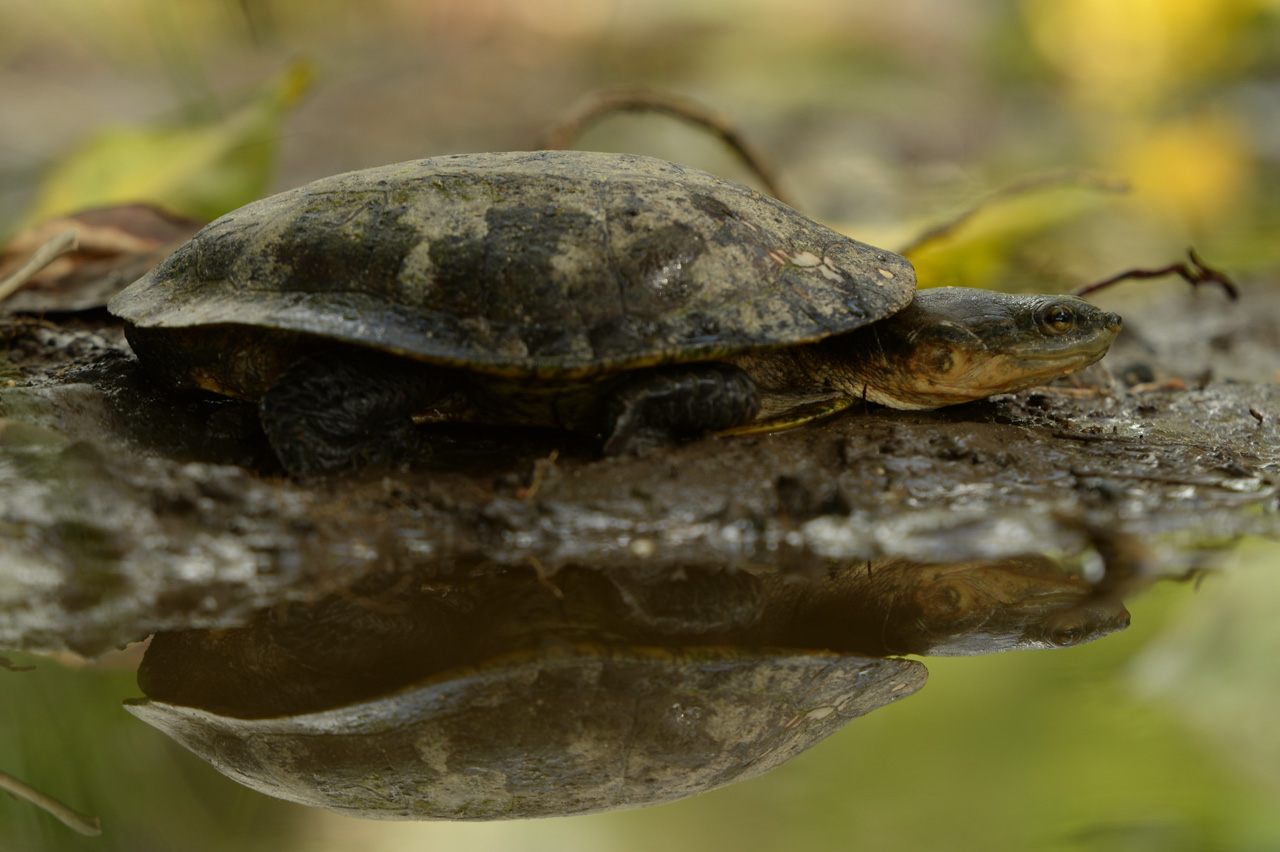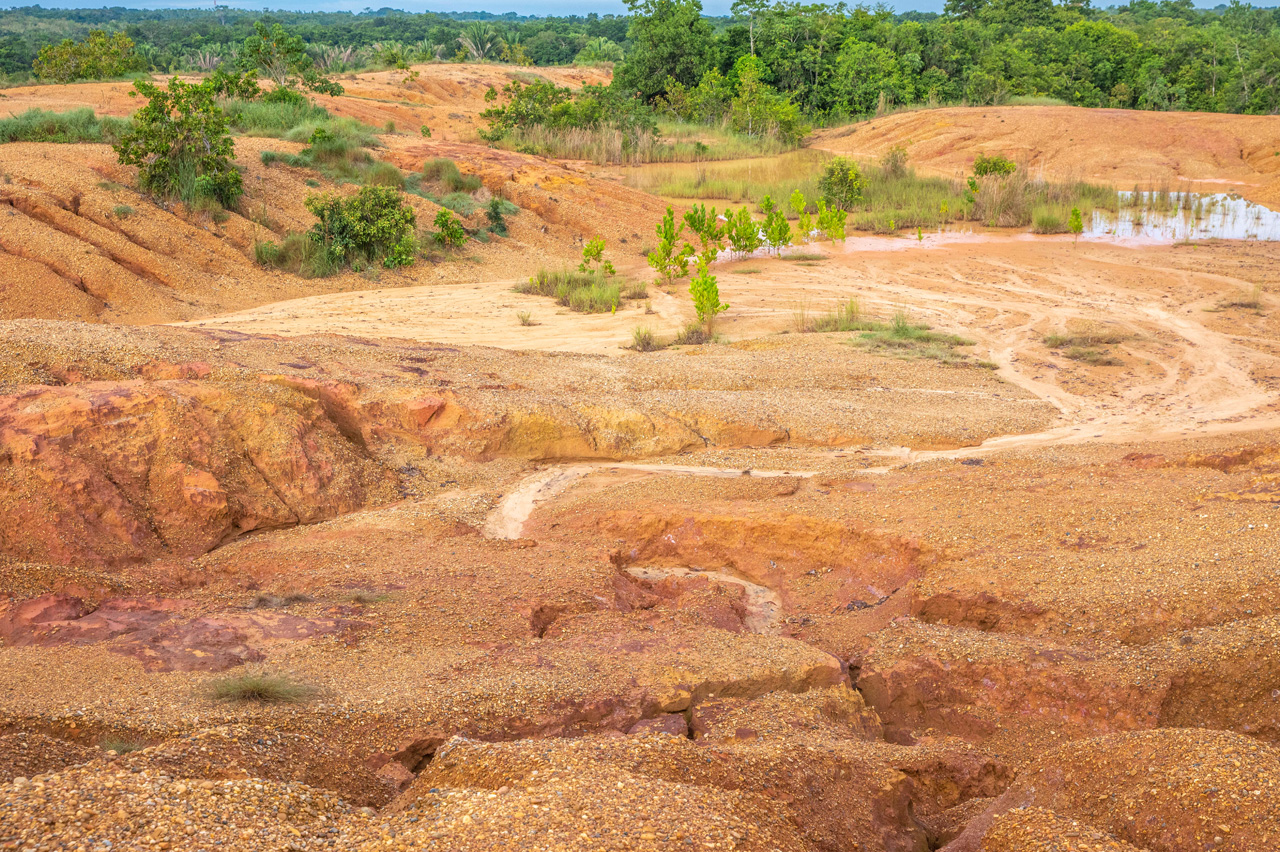Mesoclemmys dahli
This freshwater turtle is endemic to Colombia, mainly distributed across several departments in the Caribbean region. It has a disproportionately large head relative to its shell, with tympanic membranes representing 23-26% of its head length. The shell is generally low, sometimes with a barely visible keel in juveniles and a dorsal depression in adults. Males are smaller than females, with longer, thicker tails and a more concave plastron.
It inhabits small ponds, creeks, and temporary or permanent streams with slow currents and riparian vegetation in dry forests and hilly landscapes. As an omnivore, it feeds on snails, crustaceans, aquatic insects, tadpoles, frogs, fry, small fish, carrion, and occasionally plant material. This diverse diet helps control insect populations, limits the spread of aquatic vegetation, recycles nutrients, and disperses seeds.
Mesoclemmys dahli is classified as Critically Endangered by the International Union for Conservation of Nature (IUCN). In Colombia, it can be found in the departments of Atlántico, Bolívar, Cesar, Córdoba, Magdalena, and Sucre.
 Foto: "EL PATO" Salcedo / WCS Colombia
Foto: "EL PATO" Salcedo / WCS Colombia
For its conservation, WCS conducts annual monitoring of Mesoclemmys dahli populations in the localities of Bajo Limón (Córdoba), Chimichagua (Cesar), and San Benito Abad (Sucre).
In Chimichagua (Cesar), WCS implements a restoration program to promote the turtle's natural habitat and protect local streams. This effort has been carried out in collaboration with local landowners, who have voluntarily supported conservation agreements.
Additionally, in 2020, a property in San Benito Abad (Sucre) was acquired to establish the La Carranchina Natural Reserve, the first protected area dedicated to the care and conservation of this species.
 Foto: Daniël Nelson
Foto: Daniël Nelson
At La Carranchina Natural Reserve, restoration processes, conservation agreements with landowners, and a genetic rescue initiative have been carried out to mitigate the species' ongoing decline.
In Chimichagua, nine conservation agreements have been established with landowners, resulting in the protection of 394 hectares. In these areas, permanent stream fencing has been implemented to protect them from livestock, alongside restoration processes that have included planting 8,000 trees since the beginning of the initiatives in 2017.
In La Carranchina Natural Reserve, active restoration and management are carried out over 120 hectares. Additionally, the project has involved the local community through the establishment of a nursery, supported by local landowners.
Translated with AI support